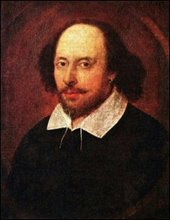
In working on your Shakespeare essays, I keep finding misunderstandings regarding direct and indirect characterization.
When a character describes another character, as the Chorus or bishops describe Henry and his maturity, it is direct characterization. The author is using a character to directly tell the audience about the other character. [In a work in which there is a narrator, such a novel or short story, direct characterization is often provided by the narrator, not another character.] Now, you must be careful to make sure that character who is speaking is believable. For example, when the Dauphin speaks of Henry being weak, other characters contradict him, so we know that he is not to be believed. Both bishops agree that a change has occurred and there is no reason to doubt them since they are scheming together.
When we make judgments about a character because their words or action, it is indirect characterization. Shakespeare reinforces the bishops comments with multiple examples of Henry's strong character (tennis ball response, traitors and Bardolph's execution, speeches). Another example of indirect characterization is the conversation the bishops have between themselves. Their desire to keep their wealth, even to the extent of bribing the king, speaks volumes about their character.
The other issue concerns your understanding of character types. Round, Flat, Static and Dynamic are literary terms, not actual descriptions of people. Many appear to confuse the literary idea that Shakespeare crafted Henry as a round (i.e. complex and contradictory) character with the historical Henry V. Keep in mind that we use these terms as literary analysis tools.

2 comments:
i seriously enjoy all your posting way, very useful.
don't quit and keep writing for the reason that it simply worth to follow it.
impatient to see much of your content, regards ;)
this actually help..THANKS!!!
Post a Comment